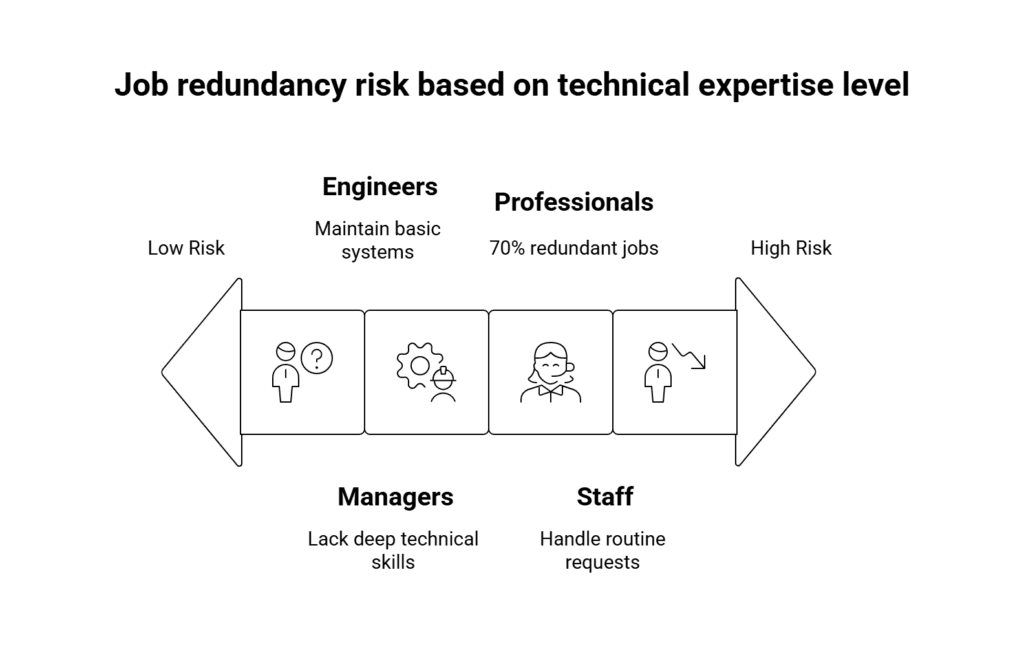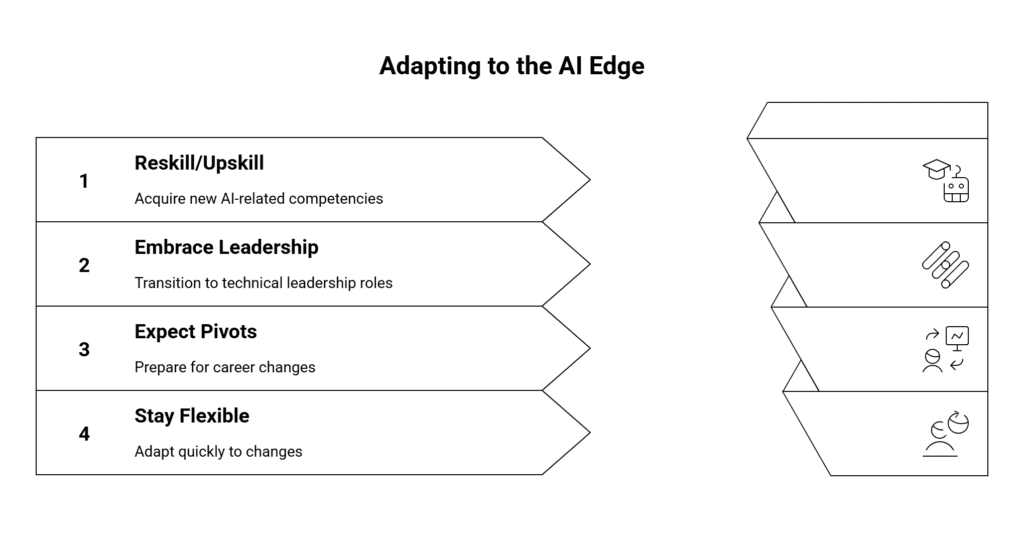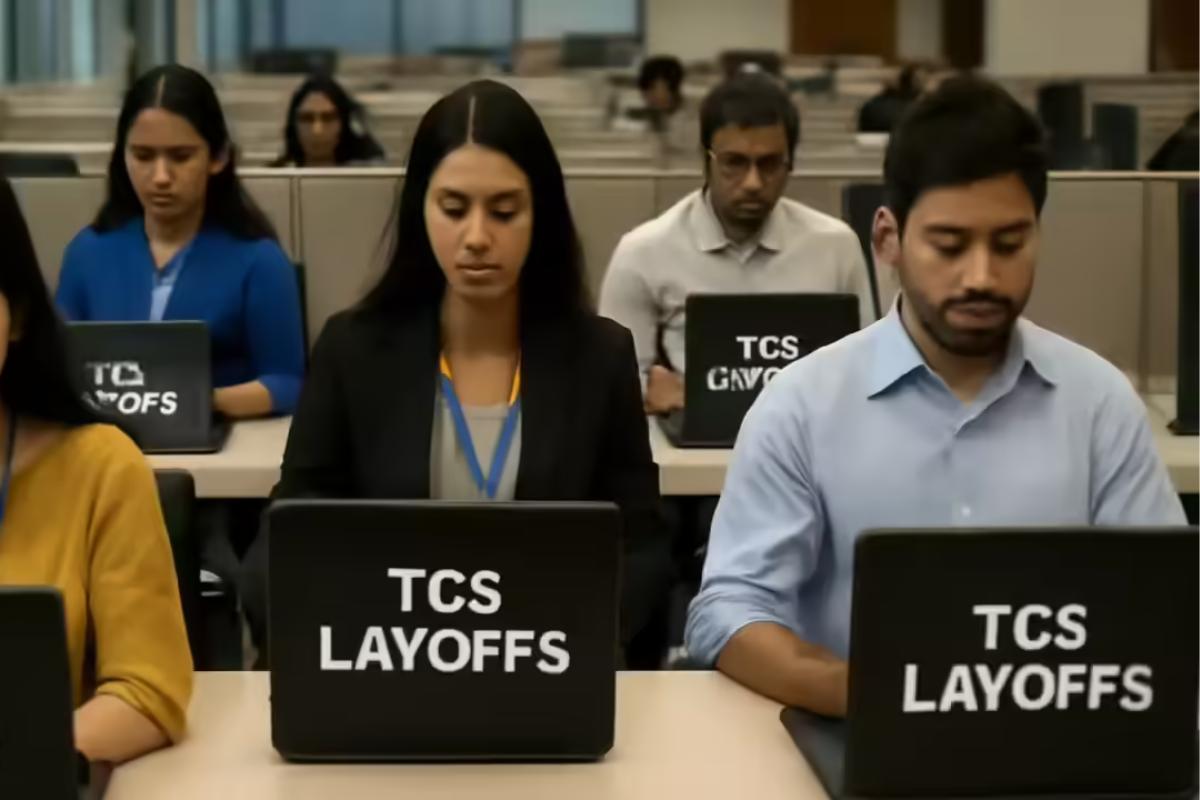The Beginning of a New Era in Indian IT
Late July 2025. Tata Consultancy Services, famously TCS, dropped news that rippled far beyond its offices and well into living rooms, industry forums, and boardrooms across the globe: more than 12,000 jobs were set to be cut. For an outsourcing titan with over 600,000 employees, this wasn’t just an internal shakeup. It was a signal flare. The sector itself, worth a staggering $283 billion and employing nearly 5.7 million people as of March 2025, had reached an inflection point.
Funny thing is, you might have noticed this happening everywhere, not just in TCS board meetings or cramped cubicles. Across India’s technology ecosystem and, in fact, in global companies like Microsoft, Intel, Meta, and the shifting sands beneath workforce strategies whisper the same message: automation and artificial intelligence (AI) aren’t in the background anymore. They’re right up front, driving the bus, transforming how work gets done, reshaping who does it, and redefining what jobs even look like.
Why Is This Happening Now?
Painful as it is for thousandsespecially those in their forties and fifties, many with a long, loyal career behind the reasons for mass layoffs are layered. Skill mismatch sits at the center.
- AI and automation can now handle many manual, repetitive tasks once performed by hundreds of thousands of workers.
- Clients demand faster, leaner, smarter solutions. “Cost optimization initiatives” and “productivity gains” aren’t just buzzwords anymore. They’re what gets contracts signed or dropped.
- The old pyramid structure of the IT workforce, with broad bases of entry-level engineers propped up by layers of management, is flattening. Middle managers without up-to-date technical skills are in the crosshairs.
Here’s the kicker: most public statements by TCS and other IT giants have painted these layoffs as stemming mainly from “skill mismatches,” not explicitly productivity enhancements by the latest tech. But that distinction, if I’m honest, is kind of moot. The reality is simple: AI and the need to reskill are rewriting the rules of the game.
Who’s Most at Risk?

This isn’t a blanket sweep. Sector analysts estimate up to 500,000 roles across India’s IT outsourcing industry could disappear in the next two to three years. The focus? Mid and senior management, especially those whose skills orbit around project management, manual testing, infrastructure supportanything that’s become redundant in an era of AI-enabled agility and automation.
Here are the segments feeling the heat:
- Managers lack deep technical expertise.
- Engineers whose main responsibilities involve software testing, user experience, or maintaining basic systems.
- Staff supporting network operations or handling routine help desk requests.
- Professionals with 4–12 years of experience estimated 70% of soon-to-be redundant jobs fall in this cohort.
It isn’t that these people aren’t smart or hardworking. It’s that the work itself is changing, and demand is racing away from their skill sets.
TCS and the Industry “Bench” Policy
If you’re a TCS staffer, you’ve likely heard all about the new “bench” policy. No more long project-free periods (so-called “bench time”). Employees must now maintain a minimum of 225 billable days per year and have only a narrow 35-day window between assignments.
For those not getting redeployed, it’s a tough bind. No place to hide while waiting for a new project; no extension for retraining. For many, this translates to a forced exitjust as the sector’s internal culture, once defined by loyalty and stability, morphs into something more high-pressure and performance-driven.
The “Great Skills Race”: Upskilling in the Age of AI
TCS says it’s invested heavily in retraining. Over half a million employees reportedly received foundational AI skills training, and 100,000 have completed advanced AI courses. Yet the skills gap remains a stubborn barrier. For many seasoned professionals, especially in management, the move from traditional project oversight to hands-on technological leadership is, well, a steep climb.
Here’s what’s happening in practice:
- Old “waterfall” style management, with its layered leadership and long project timelines, is being replaced by agile, product-centric models that demand technical prowess and real-world, hands-on smarts.
- Non-technical project managersonce sought after for keeping sprawling teams moving, but see their roles collapse, replaced by AI-enabled platforms and “outcome-based models” focused on efficiency.
Like former Tech Mahindra CEO CP Gurnani coyly quipped, the industry’s old obsession with headcount has become “Jurassic Park material.”
The Wider Economic Ripples: Beyond TCS
It’s not just IT workers feeling the burn. The anxiety and uncertainty generated by these layoffs send pulse waves through the broader economy. Middle-class spending, so integral to sectors like real estate, tourism, and luxury goods, faces downward pressure when tens of thousands of job-holders start worrying about tomorrow.
Let’s break this down:
- The outsourcing sector contributes over 7% of India’s GDP. That’s no small chunk.
- When upper- and middle-tier earners see jobs disappear, discretionary spending tanks. Travel plans get scrapped; big purchases like homes get delayed.
- Younger workers, meanwhile, see the writing on the wall and redouble efforts to become “AI-ready,” but not everyone can pivot quickly.
Global Perspective: Tech Layoffs Everywhere
If you thought this was just an Indian story, think again. Microsoft, Intel, Meta, HP, Google, Amazon, and even Panasonic have all announced immense layoffs in 2025. Over 80,000 tech workers have lost jobs this year alone, with Microsoft leading the chargemore than 15,000 laid off in 2025.
Their reasons mirror what’s happening in India:
- Strategic realignment for an “AI-first” future.
- Leaner, faster organizations are designed to thrive amid shifting markets and economic uncertainty.
- Aggressive cost-cutting and performance optimization. No room for “low performers.”
- Focused investment in AI infrastructure and talent. Jobs in legacy systems and traditional support functions, out; roles building next-gen AI applications, in.
Funny thing is, executives everywherefrom Satya Nadella at Microsoft to the top brass at TCSframe these moves as “future-readying.” Kind of euphemistic, but true enough: as generative AI, advanced analytics, and machine learning permeate business operations, workforces must evolve or shrink.
The Changing Social Contract
Pause for a minute. For decades, joining a firm like TCS was a ticket to stability, prosperity, and, often, a lifelong career. Employees gave loyalty, and companies, in turn, offered predictability and gradual advancements of an unwritten contract.
But by 2025, that contract is being renegotiated. Now, the focus is on outcome-driven teams, high-value skills, and continual adaptation. Comfort and complacency? Pretty much gone. Rapid evolution and continuous learning? The only way forward.
Here’s the rub: with layoffs concentrated in middle management, those who spent decades building experience and climbing corporate ladders suddenly find themselves on the outside. Upskilling isn’t just a choice for survival.
Adapting to the AI Edge: What Can Workers Do?

The advice from recruiters, industry veterans, and executives is surprisingly frank a little unsettling. To stay competitive:
- Reskill or upskill immediately. Pick up core AI competencies, cloud technologies, advanced coding, and agile methodologies.
- Embrace technical leadership roles. Project managers must become hands-on product owners, technical architects, or scrum masters with real coding chops.
- Expect career pivots. That big leap into a new specialization might be more necessity than an ambition these days.
- Stay flexible and open to change. Those who can adapt and do so quickly stand the best chance of riding the AI wave instead of being washed away.
For the Industry: A Turning Point
Nasscom, the industry’s chief association, puts it succinctly: “The tech industry is at a turning point, as AI and automation become central to business operations.” Cost-optimization and productivity become the north stars. Firms must do more with less, or generate more value with leaner teams. IT service providers like TCS invest billions in new markets, tech stacks, and internal AI adoption, all while reshaping their workforce models to fit the futuristic mold.
None of this is easy. All of it signals a fascinating, if at times disorienting, transformation.
The Next 2–3 Years: What to Expect?
Analysts forecast sustained turbulence.
- Up to 500,000 Indian IT outsourcing jobs could vanish by 2028, with the biggest crunch in mid-management and technical support functions.
- Major IT companies are likely to continue investing heavily in employee training, but redeployment isn’t always possible.
- Discretionary project delays, inflation uncertainties, and global tariff anxieties mean lean budgets and cautious growth.
- The outsourcing sector’s role as India’s middle-class backbone will shift. Yes, jobs will remain, but many will look fundamentally different.
Conclusion: Facing the Future, Fact by Fact
So… what does it all mean? TCS’s layoffs may have made headlines, but they’re just the tip of the iceberg. Across Indiaand, for that matter, in every major tech hubjobs are changing, workplaces are evolving, and professionals are scrambling to fit into a landscape being quickly redrawn by AI and automation.
Some quick takeawaysjust so there’s no confusion:
- Over 12,000 jobs cut by TCS in 2025, hitting mid and senior-level staff hardest.
- Up to half a million roles may vanish in the next few years across India’s $283 billion outsourcing sector.
- Skill mismatch, not poor performance, drives most layoffs, which simply means companies need fewer people for better results.
- Companies everywhere are racing to “future-proof” themselves by adopting AI, reimagining internal policies, and, yes, paring down teams.
- For individuals, traditional career paths may be fading. Upskilling, agility, and technical mastery are the new currency.
It’s not the end of the road for IT jobs, not by a long shot. But, if I’m honest, the road itself has changedand where it leads, no one’s entirely sure. For now, the focus turns to adaptation, resilience, and a single, stark truth: in the era of AI-driven transformation, standing still is simply not an option.






















